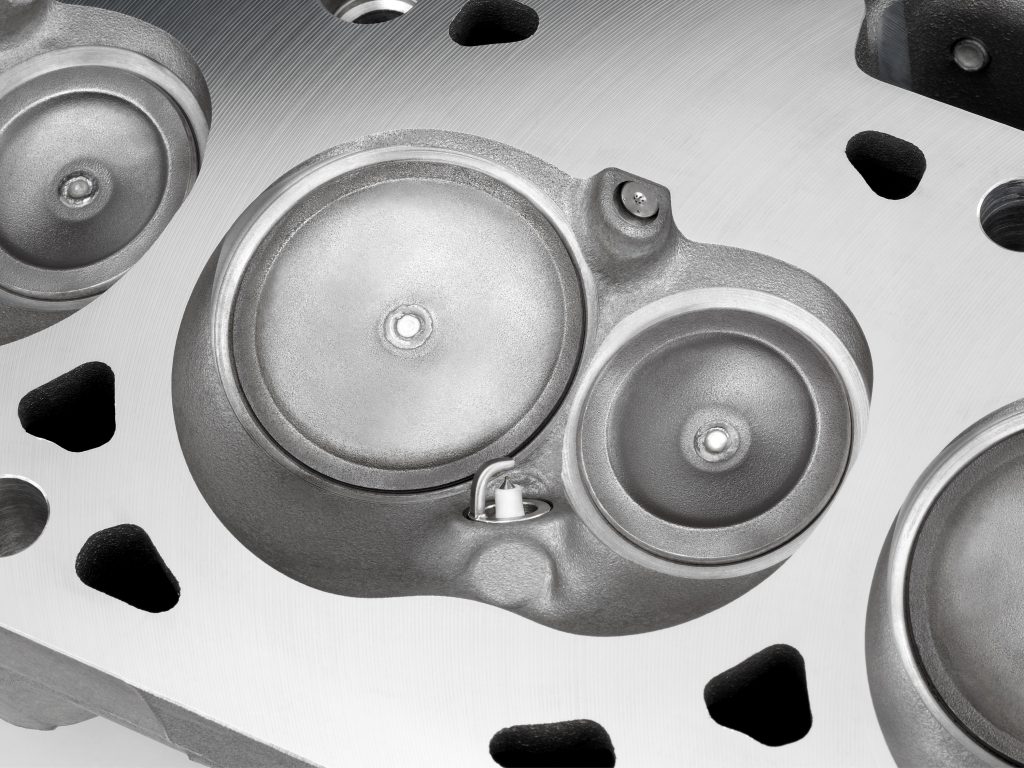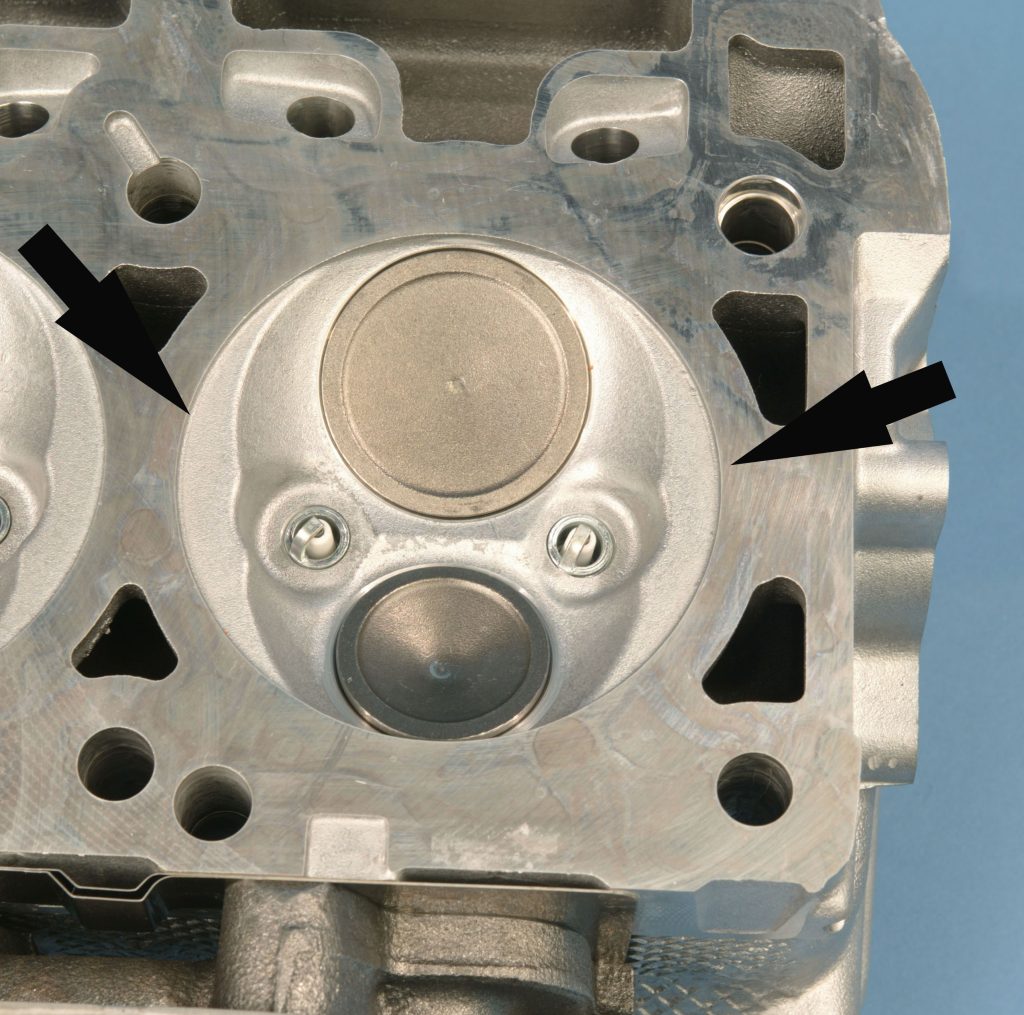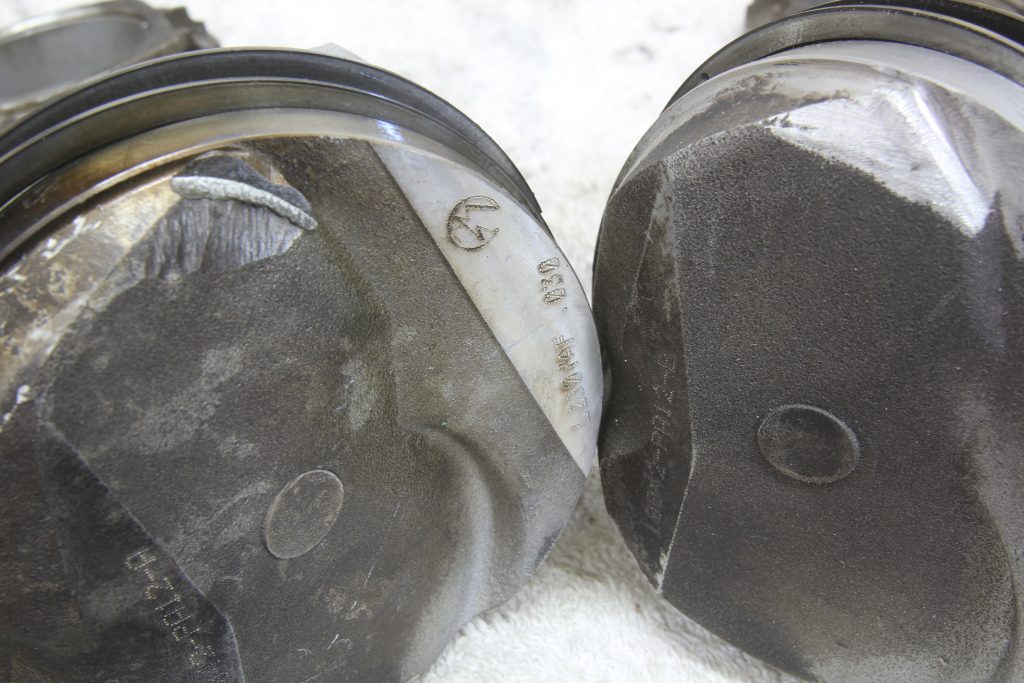I’m putting together a 355ci small block Chevy and I’m in the planning stages. I was wondering, what are some of the ways to juggle compression ratio? Everybody always tells you to run 9:1 but I think this engine would make a little more power with perhaps 10:1 compression. I know I can get close with a combination of piston top and a small chamber but are there other ways to dial-in the compression?
B.C.
Compression ratio is the big equalizer for power. The reason for selecting a compression ratio is more about how much you are willing to spend for the octane rating for this street engine. With a 9:1 ratio, you might get away with 87 octane fuel. But a higher compression ratio like 10:1 or 10.5:1 will deliver more torque, more horsepower, a much crisper throttle response, and better fuel mileage. So it’s worth the effort to build that into your next engine.
If you pay attention to modern engine design, you may have noticed that compression ratios are on the rise. The OE’s have figured out how to improve power by increasing compression while still allowing the engine to run on 91 octane premium. With current direct injection engines like GM’s LT1, this engine now enjoys an honest 11.5:1 compression ratio designed to run on 91 octane pump gasoline.
This is because now the fuel is injected directly into the combustion chamber which ensures an ideal air-fuel ratio. Plus, GM’s engineers have figured out how to design a combustion space that will optimize power yet minimize detonation. Of course, they benefit from detonation sensors that immediately retard timing if detonation is detected, which keeps the engine away from the harmful effects of uncontrolled combustion.

Yet even with a simple carbureted engine, you can still have the power from higher compression without the harmful effects of detonation as long as the engine builder is careful with his parts selection and equally diligent with engine assembly. Compression is a great way to improve performance while not hurting efficiency.
But there are also pitfalls you must avoid.
One of the best places to focus on is piston-to-head clearance (or what some call squish or quench). This is defined as the distance from the piston to the cylinder head. Most production two-valve pushrod engines today feature wedge style combustion chambers instead of the hemispherical design. A hemispherical combustion chamber enjoys certain airflow benefits but even Chrysler realized that, with their new Gen. III Hemi, it needed quench areas in order to improve combustion efficiency.

The quench area on a typical wedge head is the flat portion adjacent to the combustion chamber that is exposed to the cylinder. This flat portion is designed to match a flat portion on the piston. As the piston approaches Top Dead Center (TDC), these two surfaces come very close together—generally less than 0.050 inch. With the piston near TDC, this tight space squishes the air and fuel, and squirts it into the combustion chamber causing increased turbulence which thoroughly mixes the air and fuel for improved combustion.
The tighter the engine builder can maintain this quench space, the more turbulence is created which dramatically improves combustion. The consensus opinion is that a tight quench can assist marginally high static compression ratios to minimize detonation since less timing is needed to make the same, or more, power.
For street wedge engines with steel connecting rods, a tight piston-to-head clearance is generally acknowledged at 0.040 inch. However, there are combinations where this can be tighter perhaps as close as 0.035 inch. Much of this depends on piston rock, which occurs across TDC as the piston changes direction. Piston rock is affected mainly by skirt design and piston-to-cylinder wall clearance. The looser the piston-to-wall clearance, the more the piston will rock and the wider the quench distance will need to be to prevent the piston from hitting the head.
This is our long-way-around way to answer your question.
As an engine builder, it comes down to playing with the existing piston-to-deck clearance. Let’s look at a small block Chevy example. Let’s say we’re assembling a 355ci engine and we measure 0.010 inch of clearance between the top of the piston and the deck surface.
If we are shooting for a 0.038 inch quench clearance, then we would ideally need a 0.028 inch head gasket. The typical compressed thickness for a composition gasket is around 0.041 inch which is too thick. We could have the block milled to a near zero deck height. That would be one solution.
An alternative would be an MLS (multi-layer steel) cylinder head gasket which is available from many good companies like Fel-Pro, Victor-Reinz, and Cometic. Most only offer a couple of different gasket thicknesses but Cometic offers a wide selection of thicknesses. We looked into their catalog and chose a lineup of SBC gaskets at a 4.100 inch bore diameter. We looked these up at SummitRacing.com and found over 20 head gaskets spanning a thickness range from 0.023 to 0.120 inch. This is an amazing range of gasket thicknesses, allowing the engine builder a variety of options.
Let change this scenario to an LS engine where the piston protrudes from the deck by 0.008 inch. In the old days with only a 0.041 inch gasket, this would make the piston-to-head very tight and perhaps require perhaps custom machining to the pistons. But today, we could just spec a 0.051 inch head gasket and we’d be right in the ballpark. Plus this moves the piston rings closer to the top of the bore and might improve performance slightly.
Cometic offers these same gasket thicknesses over a wide variety of engines—not just for small block Chevy or LS engines. This is just another example of how manufacturers are making it much easier to build the engine you desire. You just have to know where to look!


I have a zeroed decked 383 with aluminum 202 stainless steel valves , 1.6 roller rockers, your recommended he’d to piston clearance and expected compression ? Ty !
Hi Jeff
I have a question and I am 99% on what your answer will probably be same as mine.
I just purchased Lunati camshaft part # 20110711 BBC hydraulic roller for marine engine application. My main question is I just degrees cam and checked the intake centreline using .050 method both sides of intake lobe toe down .050 and I came up with 111.25 ICL
Now I checked my exhaust lobe and it is coming in at 117 ECL
I add the 111.25 + 117=114.125 is my LSA
The cam card states from Lunati that it is a 112 LSA somewhere something went wrong at there factory am I not correct?
The cam card states 112 LSA and say camshaft straight up position TDC cam is 106 ICL I retarded the crank gear 4 degrees retard and put my ICL @ 111.25 is this ok for a marine inboard engine application?
The camshaft having mathematically 114.125 LSA subtract ICL 111.25= 2.875 camshaft advance built in to cam.
The Valve overlap worked out to be only 1.5 degree should be save against water reversion being a wet style hi performance exhaust system.
Question I’ve been curious about for a while..
Why would you use a head gasket with 4.100 bore on a 355? Couldn’t you use a 4.030?
Too many parts and different compression ratios. I have a 406 sbc. 400 bored .030. I was making a cruise engine for my 55 Chevy. I have a set of Kieth Black hyperutectic pistons with a – 18cc D dish and I was going to use a vortec cylinder head and static compression was going to be at 9.8 to 1. with the piston down in the bore at .005. Well I was building a 406 pro street engine for my 69 Nova. Forged steel Callies crank, 6 inch H beam rods and forged Mahle pistons with 200 cc intake runner aluminum angle plug heads with 68 cc chambers. The problem started when I recently bought a Mustang GT. I figured I would sell the 69 Nova that runs with the stock engine still in it.,,,, My thoughts were to use the aluminum heads instead of the vortecs for the 55 Chevy cruiser. I also have a rotating assembly with Kieth black flat tops with -7cc valve reliefs on a 5.7 rod. If I used that assembly with the aluminum heads, my static compression will be at 10.8 to 1 and if I retard my 110* LSA cam to 110 ICL that would put me at 9.1 dynamic compression ratio. What are your thoughts for a healthy street engine on pump gas?
Building my first ever ls1 engine.
Bore 3.903
Stroke 3.622
DSS forged 6cc dome top pistons 1.115 pin height
Callies comp star H beam rods 6.3 inch.
Zero deck height
.035 MLS gasket
Trickflow gen x 215cc heads 65cc chamber
Static compression ratio 11.78 to 1
Running comp cam 54 458 11.
Online calculators say 9.1 or 194psi dynamic compression zero altitude and N/A
Want to run it on pump98 fuel in Australia.
1 have I worked out both static and dynamic compression ratio correctly.
2 will these compression ratio be OK on pump98 fuel?
With 98 Octane, depending upon your Pistons and Cylinders smoothness so as not to get Hot Spots for Pre-ignition, pinging or Detonation, easily your Engine shouldn’t have a problem with 12 to 1 CR.
There us a formula for figuring out max CR for a specific Octane rating as in, I Built a 2332cc VW Engine with 11.5 to 1 CR and would kick it with a mix of 91 Octane and One Quart if 104 Octane fuel to 4.5 gallons 91 fuel Averaging 93 tob94 Octane but, could get away with 91 Pump gas.
Built 4 1835cc VW Engines at 10 to 1 and ran all on 91 Pump gas no problems! One Engine was a totalbstreet engine and pulled apart at 60,000 Miles with Valvoline 30wt, bearings were like NEW and no Detonation, EVER! Good luck on your Build, Sounds Exstreamly Fun!! Gary